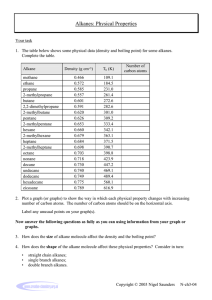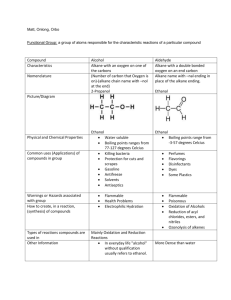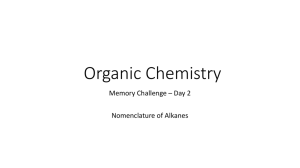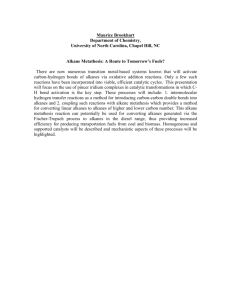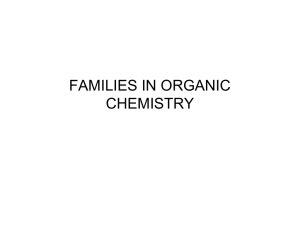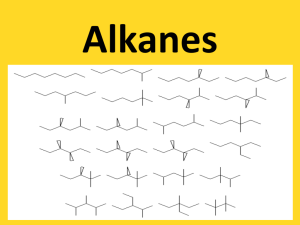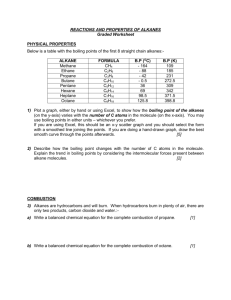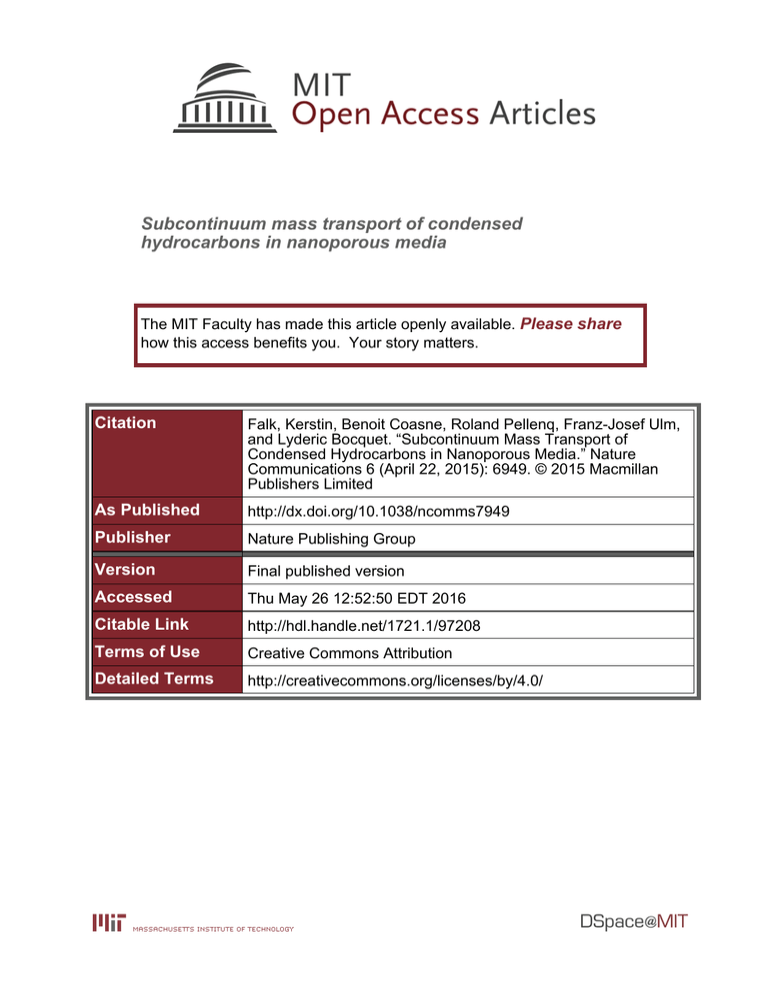
Subcontinuum mass transport of condensed
hydrocarbons in nanoporous media
The MIT Faculty has made this article openly available. Please share
how this access benefits you. Your story matters.
Citation
Falk, Kerstin, Benoit Coasne, Roland Pellenq, Franz-Josef Ulm,
and Lyderic Bocquet. “Subcontinuum Mass Transport of
Condensed Hydrocarbons in Nanoporous Media.” Nature
Communications 6 (April 22, 2015): 6949. © 2015 Macmillan
Publishers Limited
As Published
http://dx.doi.org/10.1038/ncomms7949
Publisher
Nature Publishing Group
Version
Final published version
Accessed
Thu May 26 12:52:50 EDT 2016
Citable Link
http://hdl.handle.net/1721.1/97208
Terms of Use
Creative Commons Attribution
Detailed Terms
http://creativecommons.org/licenses/by/4.0/
ARTICLE
Received 24 Nov 2014 | Accepted 17 Mar 2015 | Published 22 Apr 2015
DOI: 10.1038/ncomms7949
OPEN
Subcontinuum mass transport of condensed
hydrocarbons in nanoporous media
Kerstin Falk1, Benoit Coasne1, Roland Pellenq1, Franz-Josef Ulm1 & Lydéric Bocquet1,w
Although hydrocarbon production from unconventional reservoirs, the so-called shale gas,
has exploded recently, reliable predictions of resource availability and extraction are missing
because conventional tools fail to account for their ultra-low permeability and complexity.
Here, we use molecular simulation and statistical mechanics to show that continuum
description—Darcy’s law—fails to predict transport in shales nanoporous matrix (kerogen).
The non-Darcy behaviour arises from strong adsorption in kerogen and the breakdown of
hydrodynamics at the nanoscale, which contradict the assumption of viscous flow. Despite
this complexity, all permeances collapse on a master curve with an unexpected dependence
on alkane length. We rationalize this non-hydrodynamic behaviour using a molecular
description capturing the scaling of permeance with alkane length and density. These results,
which stress the need for a change of paradigm from classical descriptions to nanofluidic
transport, have implications for shale gas but more generally for transport in nanoporous
media.
1 Department
of Civil and Environmental Engineering and MultiScale Material Science for Energy and Environment UMI 3466 CNRS-MIT, Massachusetts
Institute of Technology, 77 Massachusetts Avenue, Cambridge, Massachusetts 02139, USA. w Present address: LPS, UMR CNRS 8550, Ecole Normale
Supérieure, 24 rue Lhomond, 75005 Paris, France. Correspondence and requests for materials should be addressed to B.C. (email: coasne@mit.edu) or to L.B.
(email: lyderic.bocquet@ens.fr).
NATURE COMMUNICATIONS | 6:6949 | DOI: 10.1038/ncomms7949 | www.nature.com/naturecommunications
& 2015 Macmillan Publishers Limited. All rights reserved.
1
ARTICLE
NATURE COMMUNICATIONS | DOI: 10.1038/ncomms7949
O
ver the last decade, natural gas recovery from shales has
increased worldwide, particularly in the United States,
where production rates are skyrocketing—nowadays
about 40% of the natural gas produced in the United States, as
compared with 1% in 2000 (refs 1,2). Predictions foresee this
transformation to continue with part of the attention shifted to
shale oil. However, the reliability of these predictions is highly
disputed3,4 because of large uncertainties over the availability of
this resource and large concerns about its environmental
impact5,6.
From a scientific perspective, shale gas and oil are trapped in a
complex network of small pores, in particular in organic
inclusions (kerogen) with sub-nanometre pore space7. A key
characteristic of these unconventional reservoirs is their ultra-low
permeability8. Quantitatively, flow rate predictions are classically
based on Darcy’s law
k
ð1Þ
q ¼ @z P
Z
stating that the volumetric fluid flux through a porous material
depends linearly on the pressure gradient, the inverse of the fluid
viscosity Z and a material-specific permeability k. Typically, the
permeability scales as the square of the pore diameter and is
measured in Darcy (1DC0.987 10 12 m2). Unconventional
reservoirs exhibit permeabilities of the order of 10 9 D, typically
six orders of magnitude smaller than conventional reservoirs8,
and in direct line with the nanoporous structures of kerogen7.
Considering that kerogen is the hydrocarbon source, which
produces the gas and oil through its decomposition, the slow and
complex hydrocarbon migration from kerogen to the cracks
surface is the rate-limiting step9–11. Such ultra-low permeability
raises concerns on the applicability of the Darcy framework itself
to account for mass transport in the nanoporous kerogen.
Although attempts have been made to palliate for the breakdown
of Darcy approach by including slippage in gas flow, via, for
example, the Klinkenberg effect12,13, such empirical corrections
cannot capture the complex adsorption and transport behaviour
of hydrocarbon in ultra-confining porous materials. Such effects
must manifest themselves through a complex interplay between
apparent viscosity and wettability, as evidenced in recent
experiments on nanoconfined water14.
At a more global scale, some recent works aimed at explaining
the specific longtime production rates of shales beyond traditional
reservoir modelling. Monteiro et al.9 suggested a hydrodynamic
model of gas flow in nanoporous media by introducing a pressure
gradient-dependent permeability of kerogen. They predict a
power law for the decline of the production rate, which is
compatible with early-life data for several major US shale plays.
In the same line, Patzek et al.10 proposed a simplified model of
shale reservoirs, which are made up of parallel equidistant
fracture planes. Assuming Darcy-like gas flow bewteen these
fracture planes, they predict a crossover from an early-time
algebraic decay to an exponential decline at long time. Although
such macroscale modellings capture some specificities of
the gas recovery, in particular the long-time decay, they,
however, point to the lack of knowledge on small-scale
behaviours, and in particular on the role of the adsorption and
desorption processes, as well as non-Darcy multiphase flow.
Further research is needed to improve the—so far limited—
scientific understanding2.
As far as the fundamental question of fluid transport in
nanoporous materials is concerned, one expects two major
reasons for the breakdown of the Darcy framework. First, strong
adsorption effects occurring in nanopores are expected to induce
large changes in the phase behaviour of the confined hydrocarbons15,16. The density of the alkane phase inside the
2
nanoporous material is usually much larger than its bulk
counterpart and confined hydrocarbons are expected to behave
as a condensed phase, at odd with the simple gas picture. This has
potentially dramatic consequences for their transport
properties17–19. Second, research in the field of ‘nanofluidics’
has demonstrated the breakdown of hydrodynamics at the
nanoscale20–22; new phenomena such as slippage, interfacial
transport and non-viscous effects appear as the ‘molecular
granularity’ of the fluid becomes non-negligible. Overall,
hydrocarbon transport in the multiscale and disordered
nanoporosity of kerogen remains essentially not understood.
Keeping in mind that large parts of the total amount of
hydrocarbons is trapped in this nanoporosity, and that the
overall permeability of the formation will be limited by the lowest
permeability in the fluid path, there is a strong need for a reliable
theoretical framework of hydrocarbon transport in nanoporous
matrix, with the ultimate goal of obtaining more reliable
predictions, towards a more efficient and environmentally safe
exploitation technology.
Here, we present an in-depth theoretical study of n-alkane
transport in a kerogen-like nanoporous matrix, which aims at
proposing such a new theoretical framework. By relying on
statistical mechanics molecular simulations that capture the
interplay between adsorption and transport as well as the
breakdown of hydrodynamics at the nanoscale, our approach
does not require assuming any flow type (Darcy, diffusive,
Knudsen and so on). We first show that the continuum
description—the so-called Darcy’s law—dramatically fails to
describe transport within a molecular model of nanoporous
kerogen. Such a failure of the conventional description is shown
to be due to the non-viscous nature of the flow in such complex
media, which arises from strong alkane adsorption. Nevertheless,
despite the intrinsic complexity of such heterogeneous, disordered media, all permeances are shown to follow an unexpected
yet simple scaling with the alkane length. To account for the
scaling of permeance with alkane length and fluid density, we
propose a molecular description in which transport arises from a
combination of slip-like friction of the hydrocarbons with the
matrix and a free volume term. This model provides an analytical
expression for the permeance, which allows to rationalize
hydrocarbon transport in kerogen and quantitatively describe
the permeance for all alkanes, at all densities.
Results
Alkane transport in kerogen. Figure 1a,b shows the nanoporous
structure used for this study; a disordered porous carbon,
obtained using an atom-scale reconstruction technique, which
can be seen as a reasonable molecular model of kerogen as it
captures its main features (pore size, density, chemical composition including sp2/sp3 hybridization ratio, morphological disorder)23–26. The pore size distribution of the numerical sample
considered here spans from a few Å to B15 Å, which is fully
consistent with the pore sizes probed by N2 and CO2 adsorption
in kerogen (see Supplementary Fig. 1 for a comparison with
available experimental pore size distributions). We investigated
both hydrocarbon adsorption and transport in this molecular
model of kerogen using configurational biased grand-canonical
Monte Carlo and molecular dynamics simulations. Details about
the models and simulations can be found in the Supplementary
Discussion and Methods; see also Supplementary Table 1. This
will serve as the basis of a theoretical scaling model of transport,
based on the analysis of the fluctuations of microscopic variables
via the fluctuation dissipation theorem (FDT)27. Such a bottomup approach will allow us to assess fluid transport in ultra-low
permeable materials on the relevant microscopic scale (Fig. 1).
NATURE COMMUNICATIONS | 6:6949 | DOI: 10.1038/ncomms7949 | www.nature.com/naturecommunications
& 2015 Macmillan Publishers Limited. All rights reserved.
ARTICLE
NATURE COMMUNICATIONS | DOI: 10.1038/ncomms7949
100
103
104
105
106
107
Γ = n /∞
n
P (Pa)
bulk (kg m–3)
103
10–1
102
101
100
10–1
103
104
105
106
P (Pa)
107
108
109
Figure 1 | Hydrocarbons in kerogen-like nanoporous carbon under reservoir conditions. (a) System setup: n-alkanes adsorbed in a porous carbon matrix
(volume (5 nm)3); (b) zoom on one dodecane molecule (red) with its neighbours and the surrounding carbon structure; (c) adsorption isotherms of
methane (black), propane (blue), hexane (green), nonane (yellow) and dodecane (red), normalized by the maximum density r1
n reached at high pressures;
increases
slightly
with
the
alkane
length
(see
Supplementary
Methods
and
Supplementary
Fig.
2).
Because
of the small pore sizes
the mass density r1
n
(B1 nm), the system is dominated by fluid/solid interfaces, and the fluid is in a supercritical phase, that is, no gas–liquid phase transition occurs. Inset: bulk
phase diagrams for comparison.
ðlÞ
(vz
is the velocity of molecule l, lA{1;N}). We emphasize that this
linear relation is in no way imposed, but is a result of the
simulations. In other words, no nonlinear effects occur. Note that
we checked that the values of the permeance K are in full
agreement with equilibrium calculation based on Green-Kubo
relationship, see Supplementary Fig. 5a. This demonstrates that
the linear relationship obtained here pertains to the small
pressure drops relevant to experimental conditions. However,
the proportionality factor K—called permeance to make a clear
distinction from the permeability kBK Z usually defined by
Darcy’s law (equation (1))—depends on the fluid type and the
thermodynamic conditions as shown in Fig. 2b.
Non-Darcy behaviour and transport scaling law. When using
Darcy’s law, it is implicitly assumed that the permeability k is an
intrinsic material property, that is, kBK Z is a constant
depending only on the geometry of the porous matrix. Figure 3a
shows that this expectation dramatically fails for hydrocarbon
transport in kerogen as k is found to depend on both the fluid
type and adsorbed amount. A first reason for this failure of the
classical porous-media-flow description can be found in the
adsorption behaviour. As seen from the form of the adsorption
isotherms in Fig. 1c, owing to the severe confinement in small
nanopores such as in kerogen, the confined alkanes are in a state
that drastically differs from their bulk counterpart at the same
pressure and temperature15,16. In particular, comparison with the
bulk phase shows that longer alkanes are in a condensed liquidlike phase under confinement while they are in a gaseous phase in
bulk. As a result, the use of the bulk viscosity in this case is clearly
inappropriate to calculate flow properties in the nanopores. In an
attempt to extend Darcy’s law to hydrocarbon transport in
nanoporous media, we compared its predictions against the data
in Fig. 3 when using the bulk viscosity of the alkanes at the
5
s–1)
8
4
3
m2
Pa–1
6
4
k (10
–15
q (m s–1)
Adsorption and transport of linear alkanes—methane, propane, hexane, nonane and dodecane—in the kerogen-like
nanoporous carbon28 shown in Fig. 1 were investigated under
temperature and pressure relevant to shale reservoir conditions
(T ¼ 423 K and Pr100 MPa). Here, we present the key results
from an extensive investigation of adsorption, diffusion and
steady-state flow under constant pressure gradients. As shown in
Fig. 2a, the mean fluid flow velocity q in the matrix depends
linearly on the pressure gradient qzP for all considered n-alkanes
and static pressures,
1 X ðlÞ
v
ð2Þ
q ¼ K@z P with q ¼
N l z
2
0
0
5
10
15
∂zP (1015 Pa m–1)
2
1
0
102 103 104 105 106 107 108
P (Pa)
Figure 2 | Alkane transport in kerogen-like nanoporous carbons. Flow of
different n-alkanes in nanoporous carbon under an external driving force
rP: methane (black), propane (blue), hexane (green), nonane (yellow)
and dodecane (red). (a) Linear response of the mean flow velocity to the
pressure gradient (T ¼ 423 K, P ¼ 25 MPa, dashed lines: linear fits); (b)
permeance K ¼ q/rP as a function of the thermodynamic equilibrium
pressure P. Values of the permeance K are in full agreement with equilibrium
calculation based on Green–Kubo relationship, see Supplementary Fig. 5a.
This demonstrates that the linear relationship obtained here pertains to
small pressure drops relevant to experimental conditions.
density of the confined phase (Supplementary Fig. 3). As shown
in the inset in Fig. 3a, Darcy’s law with such corrected viscosities
also fails to describe the permeabilities observed in the molecular
simulations. We emphasize that such a pure dynamical effect
cannot be accounted for by the so-called ‘Darken factor’, which
describes the thermodynamic effect of adsorption on transport by
correcting local density gradients using local adsorption
isotherms29.
To further assess the magnitude of the hydrodynamic breakdown, many insights are provided by the molecular dynamics. An
interesting probe of the dynamical processes is the transverse
momentum fluctuations, defined in Fourier space:
X
mvzðlÞ ðtÞexp ikx xðlÞ ðtÞ
ð3Þ
jz ðkx ; t Þ ¼
l
(with x and z two perpendicular directions). In a viscous fluid,
transverse momentum relaxes via momentum diffusion and its
correlation should exhibit a ‘universal’ exponential decay at small
k and long times27: hjz(k,t)jz( k,0)iequBexp( k2vt) (n ¼ Z/r is
NATURE COMMUNICATIONS | 6:6949 | DOI: 10.1038/ncomms7949 | www.nature.com/naturecommunications
& 2015 Macmillan Publishers Limited. All rights reserved.
3
ARTICLE
NATURE COMMUNICATIONS | DOI: 10.1038/ncomms7949
10
25
8
6
6
4
2
0
0
Γ
1
4
2
0
0
∞
Γ = /n
1
K × (n + n0) (10−15 m2 Pa−1 s−1)
K×(pore)
K × (bulk) (10−20 m2)
8
20
15
10
5
0
0.0
0.2
0.4
0.6
∞
Γ = /n
0.8
1.0
Figure 3 | Breakdown of Darcy law and permeance master curve for alkane transport. (a) Permeability Z K versus loading G G ¼ r=r1
n , showing the
breakdown of the hydrodynamic prediction for the permeance: methane (black), propane (blue), hexane (green), nonane (yellow) and dodecane (red). The
viscosity is that of the bulk hydrocarbon at the corresponding pressure and temperature. Inset: Same plot with the bulk viscosity replaced by the bulk
viscosity calculated at the relevant pore density, rpores. For comparison, the dashed lines give the permeability of a cylindrical pore with diameter equal to
the mean size of the matrix pore-size distribution. (b) Permeance master curve: K (n þ n0) (with n0 ¼ 2) versus loading (same symbols as in a). This
demonstrates that KB1/n with n the alkane length. The dashed line is a guide to the eye.
the kinematic viscosity). When confined inside a solid matrix, a
viscous relaxation of the form exp[ (g0 þ k2n)t] may be
expected, with g0 steming from the Darcy friction of the liquid
with the solid matrix. In strong contrast, we find a very different
behaviour for the transverse momentum fluctuation of the
confined alkanes, with a correlation in the form of a double
exponential hjz(k,t)jz( k,0)iequ ¼ A exp( akt) B exp( bkt),
and a complex dependence of the decay coefficients ak and bk on
the wave vector k (Supplementary Fig. 4). These features
demonstrate the violation of the hydrodynamic relaxation for
all explored k scales. It suggests that non-local effects and
memory effects as described in generalized hydrodynamics with
Mori-Zwanzig memory functions may occur30. This result shows
unambiguously that alkane transport in disordered nanoporous
materials such as kerogen cannot be accounted for, at any length
scale explored, by a hydrodynamic description.
Scaling law and nanofluidic transport. The failure of the
hydrodynamic approach under extreme confinement therefore
calls for alternative frameworks of alkane transport in kerogen. A
lead is suggested in Fig. 3b where it is shown that, in spite of this
complexity, permeances K for all alkanes can be collapsed onto a
single master curve as a function of loading G ¼ rn ðPÞ=r1
n (ratio
of the alkane density to its value at very large pressure, where the
adsorbed amount reaches a plateau. The maximum density r1
n ,
which was obtained from a Langmuir fit of the adsorption isotherms shown in Supplementary Fig. 2, slightly depends on the
alkane length n. The permeance K is found to scale as the inverse
of the alkane length (number of carbon atoms n):
fluctuation of the total momentum via a Green–Kubo equation:
Z1
D0
V
K¼N
¼
ð5Þ
hqðtÞqð0Þiequ dt
kB T
V kB T
0
where D0 is the collective diffusion coefficient, N the number of
alkane molecules,
P ðlÞV the volume of the matrix, respectively, and
qðtÞ ¼ N 1 l vz ðtÞ the fluctuating centre-of-mass velocity of
the fluid with respect to the frozen matrix. As expected from the
FDT described in equation (5), the collective diffusivity D0 for the
different confined alkanes—computed using equilibrium
molecular dynamics (MD) of the q-autocorrelation function—is
in full agreement with the permeances K estimated using nonequilibrium MD, in which the flow is induced by a pressure
gradient (Supplementary Fig. 5a). This results further confirms
that hydrocarbon transport in kerogen is in the linear regime over
the entire range of pressure gradients considered. Owing to its
collective nature, D0 differs from the molecular self-diffusivity Ds
ðiÞ
ðjÞ
by cross-correlation terms (vz ðtÞvz ð0Þ with iaj) of the form
0
1
E
XD
A:
D0 ¼ Ds þ O@
ð6Þ
vzðiÞ ðtÞvzðjÞ ð0Þ
In all studied systems, the difference between D0 and Ds was
found to be small in most conditions. This is highlighted in
Fig. 4a showing that D0EDs, despite some differences for the
shortest alkanes. Consequently, we can relate the permeance K to
the mobility of single molecules as
K ðn; GÞ K ðGÞ f ðGÞ
n
ð4Þ
where f(G) is a simple function of the loading G. More specifically, we find that KðGÞ ¼ nf þðGÞn0 with n0E2 for all alkanes provides an excellent rescaling.
With the aim to propose a molecular model of alkane transport
in disordered nanoporous materials such as kerogen, we make use
of the intimate links between dissipation and fluctuation of
microscopic quantities, as described by the FDT27. In this
framework, the permeance K is expressed in terms of the
4
equ
i 6¼ j
Ds ðn; GÞ V
kB T
N
ð7Þ
which captures the main behaviour of the permeance K (see the
inset of Fig. 4a).
To proceed further, one needs to provide a molecular
description of the self-diffusion of the dense alkane phase in
the kerogen matrix. First, we compared the scaling of the selfdiffusion coefficient Ds with the chain length n for bulk and
confined alkanes. For the bulk fluid, we find that the diffusion of a
linear alkane molecule is well described by the Stokes–Einstein
relation with slip boundary conditions Dbulk
¼ kB T=ð4pZR0 Þ for a
s
particle with an effective diameter close to its longitudinal crosssection 2R0 sCH2 ; see Supplementary Fig. 6, where R0BDs Z
NATURE COMMUNICATIONS | 6:6949 | DOI: 10.1038/ncomms7949 | www.nature.com/naturecommunications
& 2015 Macmillan Publishers Limited. All rights reserved.
ARTICLE
NATURE COMMUNICATIONS | DOI: 10.1038/ncomms7949
is shown to be independent of the alkane density and length
(under typical shale reservoir conditions T ¼ 423 K and P ¼ 25
MPa, the self-diffusivity and viscosity in the bulk liquid scale
roughly as DsBn 0.7 and ZBn0.7, respectively, and the
n-dependence of the self-diffusion coefficient and the viscosity
compensate each other). The fact that the hydrodynamic
molecular sizes of alkanes are independent of their length n is
in agreement with experimental measurements31. However, we
emphasize that the origin of this behaviour is far from trivial. It
can be actually accounted for by the slippage of the continuum
alkane fluid on an individual alkane molecule along its length, as
illustrated in Fig. 5a32. This would require further investigation of
the chain dynamics using, for example, recently developed
diffusion maps33.
Coming back to the molecular diffusion of an alkane chain in
the amorphous carbon matrix, we find a very different picture, as
sketched in Fig. 5b. First, as shown in Fig. 4b, we find that, like
the permeance, Ds can be rescaled as the inverse of the alkane
length, DsB1/n. Furthermore, the rescaled diffusion n Ds is
found to be a generic function of the free volume accessible to the
alkane molecules (Fig. 4b). Qualitatively, this scaling behaviour
can be attributed to two effects. First, the strong molecular
interaction of the alkanes with the carbon matrix leads to a large
fluid-wall friction (in contrast to the low liquid–liquid friction in
the bulk). This suggests a description in the spirit of the Rouse
model for polymer diffusion34. Consider a single alkane molecule
in the matrix. Each monomer i of the alkane experiences a sliplike friction force from the matrix, fv ¼ x0vi, on top of internal
forces (x0 is the friction coefficient for a single monomer).
Therefore, the total
P external force acting on an alkane molecule
scales asP
FT ¼ x0 ivi ¼ n x0v, with its centre of mass velocity
v ¼ n 1 ivi and its mobility mT ¼ (n x0) 1. Accordingly, the
self-diffusion coefficient should scale as
kB T 1
Dð0Þ
/
ð8Þ
s ¼
nx0 n
where the superscript (0) stands for a single molecule.
Now, one should take into account density effects by
considering that a molecule is able to diffuse provided it finds a
free cavity around it. This effect can be quantified by a free
0.1
1.0
0.1
0.1
Ds
–8
0
–9
1.0
(10−8
1.0
Ds (10–8 m2 s–1)
Ds
0.1
Log10(Ds×n)
1.0
K × NkBT / V
D0 (10−8 m2 s−1)
–7
–1.5
Γ
1
1.0
0.1
–1.0
–0.5
0.0
1−V 0free/Vfree
m2 s−1)
Figure 4 | Mass transport and diffusion: towards a free volume theory. (a) Comparison of the self (Ds) and collective (D0) diffusion. Inset: Scaling of the
0
. The latter
permeance K with the self-diffusion. (b) Rescaled diffusion coefficient Ds n, with the alkane length n, versus the free volume fraction Vfree =Vfree
is calculated independently for a given adsorbed amount G, see Supplementary Information. The dashed line is the prediction of the free volume theory,
0
Ds n / 1 Vfree
=Vfree , see text. Inset: bare data for the self-diffusion coefficient for the various alkanes. The colour code is the same as Fig. 1: methane
(black), propane (blue), hexane (green), nonane (yellow) and dodecane (red).
v
v
Figure 5 | Diffusion mechanisms for bulk alkanes and alkanes confined in the porous carbon matrix. Left: In bulk, molecular diffusion is well described by
the hydrodynamic Stokes–Einstein relation Ds ¼ mkBT ¼ kB/(4pZR0) (with slip boundary conditions). The effective particle diameter 2R0 is consistent with
sCH2 —independently of the alkane length—because the diffusive motion is mostly in longitudinal direction. Right: In contrast, in the nanopores, movement
of alkane molecules is dominated by friction on the carbon matrix, corrected for the free volume accessible to the molecule (green sphere). The total
friction force is a sum of the forces between the individual monomers with the pore wall—therefore scaling linearly with the alkane length. v stands for the
molecule velocity.
NATURE COMMUNICATIONS | 6:6949 | DOI: 10.1038/ncomms7949 | www.nature.com/naturecommunications
& 2015 Macmillan Publishers Limited. All rights reserved.
5
ARTICLE
NATURE COMMUNICATIONS | DOI: 10.1038/ncomms7949
volume approach35,36, which relies on the probability to find a
void space larger than a critical volume vcrit next to the diffusing
molecule. One can therefore write
Nvcrit
exp
Ds ¼ Dð0Þ
s
Vfree
ð9Þ
where vcrit is the minimum size of a void that allows the molecule
to move into it, whereas N is the number of alkane molecules and
Vfree the accessible free volume. Estimating vcrit as the size of one
0
Nvalkane (with
alkane molecule valkane and using Vfree ¼ Vfree
0
the bare free volume in the matrix), equation (9) can be
Vfree
recast as:
Ds
Nvalkane
V0
¼ 1 free :
log ð0Þ / Vfree
Vfree
Ds
ð10Þ
25
6
20
4
K (Γ)
K × (n + n0) (10−15 m2 Pa−1 s−1)
0
with D(0)
s p 1/n. The free volume fraction Vfree =Vfree is calculated
independently for a given adsorbed amount G, see Supplementary
Information. As shown in Fig. 4b, equation (10) describes very
well the dependence of Ds on the alkane chain length and free
volume, and therefore confirms the validity of our description
(the calculation of the free volume in the simulations is described
in the Supplementary Methods).
Altogether, these results show that the bulk and confined
diffusion of alkanes follow very different mechanisms. As
illustrated in Fig. 5, the molecular self-diffusion in bulk alkanes
involves molecular motion that is mainly a translational movement in the longitudinal direction, subject to very little friction
with the surrounding fluid molecules. In contrast, the diffusion of
the confined alkanes stems merely from the friction of the
molecule against the matrix, corrected for the free volume
accessible to the molecule under motion.
15
2
10
0
0
0.4
0.6
0.8
1.0
Vfree/V 0free
Figure 6 | Mass transport of alkanes in nanoporous matrix. Rescaled
permeance K (n þ n0) for different n-alkanes as a function of the free
0
(with n0 ¼ 2). The colour code is the same as
volume fraction Vfree =Vfree
Fig. 1: methane (black), propane (blue), hexane (green), nonane (yellow)
and dodecane (red). The dashed line is the prediction in equation (11),
0
0
written here as Kðn þ n0 Þ ¼ K0 = 1 Vfree =Vfree
=Vfree ,
exp aVfree
15
2
1
1
m Pa s , a ¼ 0.23, obtained from a best fit.
with K0 ¼ 2.38 10
Inset: Permeance K versus the loading G ¼ r=r1
n for various alkanes. The
dashed lines correspond to the previous prediction in terms of the loading,
0
¼ 1 bG, with b ¼ 0.6, see Supplementary
using the relationship Vfree =Vfree
Fig. 7.
6
free
0
Vfree =Vfree
with
the free volume fraction and we used the
0
relationship Nvalkane =Vfree ¼ 1 Vfree =Vfree
; a is a numerical
constant. Figure 6 shows that the prediction in equation (11) is
in excellent agreement with the MD results for the permeance K
for all alkanes at various densities. We allow for a shift n0 in the
alkane length dependence, as our arguments provide merely the
generic scaling behaviour. All the parameters needed in the
derivation of equation (10) can be determined from simple
0
experiments. Vfree
and Vfree at a given adsorbed amount N can be
estimated from the adsorption isotherm. a and Ds(0), which
describe the dynamics of the confined alkanes, can be assessed
from diffusion experiments such as Quasi-Elastic Neutron
Scattering.
Finally, the permeance as described by equation (11) can be
recast to describe the dependency on the loading G, which is an
experimentally accessible quantity. One expects a linear relationship between the free volume fraction and the loading G, that is,
0
¼ 1 bG. This is confirmed by our simulations, see
Vfree =Vfree
Supplementary Fig. 7, providing the value b ¼ 0.60. Accordingly,
one obtains the following prediction for the mass transport
permeance K in terms of alkane length n and adsorbed amount G:
K0
1
a
K ðn; GÞ exp ð12Þ
1 bG
n bG
As shown in the inset of Fig. 6, this single expression provides a
very good description of the permeance K for all alkanes, at all
densities and does confirm the relevance of the underlying
microscopic description. This expression takes into account both
the strong adsorption of the alkane in the microporous kerogen,
via the dependence on loading G, as well as the specific
nanofluidic transport of this dense alkane phase in the disordered
matrix. It provides an explicit prediction for the permeance K,
which quantitatively captures hydrocarbon transport in the
nanoporous kerogen matrix, in spite of the breakdown of Darcy’s
law. Furthermore, our prediction allows rationalizing the 1/n
rescaling of the permeance, as found in Fig. 3b. Altogether our
prediction, equation (12) therefore establishes a framework able
to describe quantitatively hydrocarbon transport in ultra-low
permeable materials.
1
Γ
5
0
Coming back to alkane transport, one therefore predicts that
the permeance K behaves as
0
1
1
Vfree
ð11Þ
exp
a
K ðn; Vfree Þ n 1 VVfree
Vfree
0
Discussion
We demonstrated that hydrodynamics and, hence, Darcy’s law
fail to describe hydrocarbon transport in nanoporous media
because of strong molecular adsorption leading to non-viscous
flow. As an alternative to the continuum Darcy’s description, we
propose a microscopic description for the permeance K derived
from the theoretical framework of statistical mechanics, which
culminates in a quantitative prediction of the permeance as a
function of alkane length n and adsorbed amount G, an
experimentally accessible quantity37. This relation offers a
valuable tool for the fluid-specific prediction of hydrocarbon
transport properties in ultra-low permeable media such as
kerogen. Once integrated into a bottom-up model of fluid
transport in multiscale porous materials (using, for example, wellestablished homogeneization techniques), this can be the starting
point for the development of a new generation of unconventional
reservoir simulators. More generally, it proposed a useful
framework for mass transport of dense fluids in nanoporous
materials, which is pertinent to questions relevant to catalysis,
energy storage and so on. Beyond the immediate practical
NATURE COMMUNICATIONS | 6:6949 | DOI: 10.1038/ncomms7949 | www.nature.com/naturecommunications
& 2015 Macmillan Publishers Limited. All rights reserved.
ARTICLE
NATURE COMMUNICATIONS | DOI: 10.1038/ncomms7949
implications, the presented results about the exotic transport in
porous materials also raises new challenging fundamental
questions. In particular, the cross-over between hydrodynamic
to non-hydrodynamic transport in disordered nanoporous media
calls for a shift of paradigm as conventional approaches—based
on percolation, porosity and tortuosity concepts—38,39 do rely on
continuum descriptions. The present work offers a well-grounded
molecular basis to adress these questions.
References
1. U.S. Energy Information Administration. Annual energy outlook 2014 with
projections to 2040 (U.S. Energy Information Administration, DOE/EIA-0383
(2014).
2. Cueto-Felgueroso, L. & Juanes, R. Forecasting long-term gas production from
shale. Proc. Natl Acad. Sci. USA 110, 19660–19661 (2013).
3. Kerr, R. A. Natural gas from shale bursts onto the scene. Science 328,
1624–1626 (2010).
4. Hughes, J. D. Energy: a reality check on the shale revolution. Nature 494,
307–308 (2010).
5. Tollefson, J. Energy - Oil boom raises burning issues. Nature 495, 290–291
(2013).
6. Vidic, R. D., Brantley, S. L., Vandenbossche, J. M., Yoxtheimer, D. & Abad, J. D.
Impact of shale gas development on regional water quality. Science 340,
1235009 (2013).
7. Clarkson, C. R. et al. Pore structure characterization of North American shale
gas reservoirs using USANS/SANS, gas adsorption, and mercury intrusion. Fuel
103, 606–616 (2013).
8. Aguilera, R. Flow Units: From Conventional to Tight-Gas to Shale-Gas to
Tight-Oil to Shale-Oil Reservoirs. SPE Reservoir Evaluation and Engineering.
SPE-132845SPE (2013).
9. Monteiro, P. J. M., Rycroft, C. H. & Barenblatt, G. I. A mathematical model of
fluid and gas flow in nanoporous media. Proc. Natl Acad. Sci. USA 109,
20309–20313 (2012).
10. Patzek, T. W., Male, F. & Marder, M. Gas production in the Barnett Shale obeys
a simple scaling theory. Proc. Natl Acad. Sci. USA 110, 19731–19376 (2013).
11. Bazant, Z. P., Salviato, M., Chau, V. T., Viswanathan, H. & Zubelewicz, A. Why
fracking works. J. Appl. Mech. 81, 101010 (2014).
12. Clarkson, C. R., Nobakht, M., Kaviani, D. & Ertekin, T. Production analysis of
tight-gas and shale-gas reservoirs using the dynamic-slippage concept. SPE J.
17, 230–242 (2012).
13. Sinha, S. et al. Steady-state permeability measurements on intact shale samples
at reservoir conditions - effect of stress, temperature, pressure, and type of gas.
Society of Petroleum Engineers. doi:10.2118/164263-MS (2013).
14. Ortiz-Young, D., Chiu, H. C., Kim, S., Voitchovsky, K. & Riedo, E. The
interplay between apparent viscosity and wettability in nanoconfined water.
Nat. Commun. 4, 2482 (2013).
15. Coasne, B., Galarneau, A., Pellenq, R. & Di Renzo, F. Adsorption, intrusion and
freezing in porous silica: the view from the nanoscale. Chem. Soc. Rev. 42,
4141–4171 (2012).
16. Neimark, A. V. & Vishnyakov, A. Phase transitions and criticality in small
systems: vapor–liquid transition in nanoscale spherical cavities. J. Phys. B 110,
9403–9412 (2006).
17. Valiullin, R. et al. Exploration of molecular dynamics during transient sorption
of fluids in mesoporous materials. Nature 443, 965–968 (2006).
18. Levesque, M., Duvail, M., Pagonabarraga, I., Frenkel, D. & Rotenberg, B.
Accounting for adsorption and desorption in lattice Boltzmann simulations.
Phys. Rev. E 88, 013308 (2013).
19. Botan, A., Vermorel, R., Ulm, F. & Pellenq, R. J. M. Accounting for adsorption
and desorption in lattice Boltzmann simulations. Langmuir 29, 9985–9990
(2013).
20. Bocquet, L. & Tabeling, P. Physics and technological aspects of nanofluidics.
Lab. Chip. 14, 3143–3158 (2014).
21. Thomas, J. A. & McGaughey, A. J. H. Water flow in carbon nanotubes:
transition to subcontinuum transport. Phys. Rev. Lett. 102, 184502 (2009).
22. Won, Y. & Aluru, N. R. Water permeation through a subnanometer boron
nitride nanotube chang. J. Am. Chem. Soc. 129, 2748–2749 (2007).
23. Firouzi, M., Rupp, E. C., Liu, C. W. & Wilcox, J. Molecular simulation and
experimental characterization of the nanoporous structures of coal and gas
shale. Int. J. Coal Geo. 121, 123–128 (2014).
24. Orendt, A. M. et al. Three-dimensional structure of the Siskin Green River Oil
Shale Kerogen Model: a comparison between calculated and observed
properties. Energy Fuels 27, 702–710 (2013).
25. Kelemen, S. R. et al. Direct characterization of kerogen by X-ray and solid-state
13C nuclear magnetic resonance methods. Energy Fuels 21, 1548–1561 (2007).
26. Pikunik, J., Llewellyin, P., Pellenq, R. J. M. & Gubbins, K. E. Argon and
nitrogen adsorption in disordered nanoporous carbons: simulation and
experiment. Langmuir 21, 4431–4440 (2005).
27. Barrat, J.-L. & Hansen, J.-P. Basic Concepts for Simple and Complex Liquids
(Cambridge Univ., 2003).
28. Jain, S. K., Pellenq, R. J. M., Pikunic, J. P. & Gubbins, K. E. Molecular modeling
of porous carbons using hybrid reverse Monte Carlo method. Langmuir 22,
9942–9948 (2006).
29. Smit, B. & Maesen, T. L. M. Molecular simulations of zeolites: adsorption,
diffusion, and shape selectivity. Chem. Rev. 108, 4125–4184 (2006).
30. Todd, B. D. & Hansen, J. S. Nonlocal viscous transport and the effect on fluid
stress. Phys. Rev. E 78, 051202 (2008).
31. Iwahashi, M., Yamaguchi, Y., Ogura, Y. & Suzuki, M. Dynamical structures
of normal alkanes, alcohols, and fatty acids in the liquid state as determined
by viscosity, self-diffusion coefficient, infrared spectra, and 13C NMR spinlattice relaxation time measurements. Bull. Chem. Soc. Jpn 63, 2154–2158
(1990).
32. Han, Y. et al. Brownian motion of an ellipsoid. Science 314, 626–630 (2006).
33. Ferguson, A. L., Panagiotopoulos, A. Z., Debenedetti, P. G. & Kevrekidis, I. G.
Systematic determination of order parameters for chain dynamics using
diffusion maps. Proc. Natl Acad. Sci. USA 107, 13597–13602 (2010).
34. Rouse, P. E. A theory of the linear viscoelastic properties of dilute solutions of
coiling polymers. J. Chem. Phys. 21, 1272–1280 (1953).
35. Cohen, M. H. & Turnbull, D. Molecular transport in liquids and glasses.
J. Chem. Phys. 31, 1164–1169 (1959).
36. Thran, A., Kroll, G. & Faupel, F. Correlation between fractional free volume
and diffusivity of gas molecules in glassy polymers. J. Polym. Sci. B Polym. Phys
37, 3344–3358 (1999).
37. Kärger, J. & Valiullin, R. Mass transfer in mesoporous materials: the
benefit of microporous diffusion measurement. Chem. Soc. Rev. 42, 4172–4197
(2013).
38. Scholz, C. et al. Permeability of porous materials determined from the Euler
characteristic. Phys. Rev. Lett. 109, 264504 (2012).
39. Berkowitz, B. & Ewing, R. P. Percolation theory and network modeling
applications in soil physics. Surveys Geophys 19, 23–72 (1998).
Acknowledgements
This work has been carried out within the framework of the french ‘Investissements
d’Avenir’ program (projects ICoME2 Labex, ANR-11-LABX-0053 and A*MIDEX projects ANR-11-IDEX-0001-02). K.F., B.C., F.-J.U. and R.P. also acknowledge funding from
Royal Dutch Shell and Schlumberger through the MIT X-Shale Hub.
Author contributions
L.B., B.C., R.P. and F.-J.U. designed the work. K.F. performed the simulations. K.F., L.B.
and B.C. analysed the data and wrote the manuscript.
Additional information
Supplementary Information accompanies this paper at http://www.nature.com/
naturecommunications
Competing financial interests: The authors declare no competing financial interests.
Reprints and permission information is available online at http://npg.nature.com/
reprintsandpermissions/
How to cite this article: Falk, K. et al. Subcontinuum mass transport of condensed
hydrocarbons in nanoporous media. Nat. Commun. 6:6949 doi: 10.1038/ncomms7949
(2015).
This work is licensed under a Creative Commons Attribution 4.0
International License. The images or other third party material in this
article are included in the article’s Creative Commons license, unless indicated otherwise
in the credit line; if the material is not included under the Creative Commons license,
users will need to obtain permission from the license holder to reproduce the material.
To view a copy of this license, visit http://creativecommons.org/licenses/by/4.0/
NATURE COMMUNICATIONS | 6:6949 | DOI: 10.1038/ncomms7949 | www.nature.com/naturecommunications
& 2015 Macmillan Publishers Limited. All rights reserved.
7

